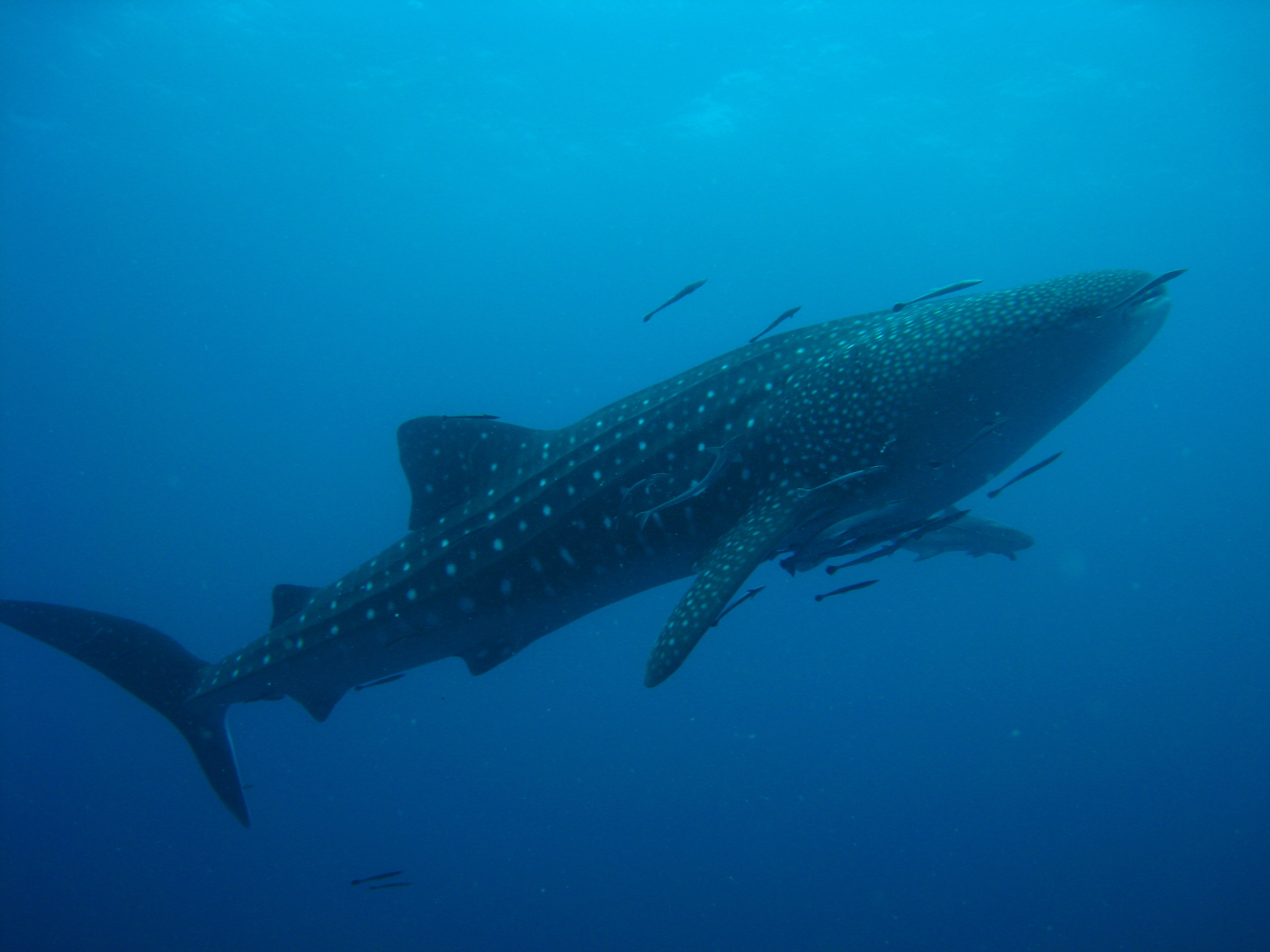Interactions
Rhincodon typus does not see much interaction
outside of its prey (see the
Form/Function page to learn about the
feeding habits!). Along with that, is the fact
that while R. typus feeds, it is not very active as a
filter feeder. While Chondrichthyes
as a class are known to travel in groups, the whale sharks are less
likely to be
involved in groups- they are the only pelagic orectoloboids
(Compagno, 2001).
Pelagic means of or dwelling in the open sea. With little interaction with fellow sea
dwelling
animals, and non-active feeding, with whom does a whale shark interact?
It does seem that whale sharks travelled alone, but there
exists one aggregation of
up to 420 whale sharks in the Mexican Caribbean (Clarke and Nelson,
1997). R.
typus may not initiate this interaction, but whale
sharks find themselves
accompanied by a small fish known as remoras. These fish will either
swim
alongside of, or latch on (by sucking) to the shark. R. typus
not only gives these
smaller fish a ride, but they also benefit the whale shark by
removing parasites on
the body or within the mouth (Ritter, 2009). Remoras and R.typus
interaction is
pictured below!
Luckily enough for you and I, there exists interaction
between R. typus and Homo
sapiens... (humans)! The chance to swim with whale sharks is a
hit with tourists in
areas such as Australia. (If you are ever on vacation in Australia,
here is a
great link
to go to if you want to swim with whale sharks! For those of you
who will not be
travelling anytime soon but want to experience interacting with a
whale shark, watch
this
YouTube video of footage from swimming with whale sharks!)
Tourism industries
that are based
on viewing whale sharks are now located in
countries from Mexico to
the
Philippines. Swimming with and observing whale
sharks has become a great sourceof income for tourism industries. Along with that,
those in charge
of
tours involving whale sharks also need to moniter the effect that
human interactionhas on the R.typus population (Rowatt and Brooks, 2012).
The relationship between humans and R.typus is not
always positive. Whale
sharks are actually considered food in some countries because of
their soft meat.
Different aspects of whale sharks are sold and traded, for example,
the flesh is
considered a delicacy in Taiwan, and the fins are sold as objects to
display. Because
of the demand for whale sharks and their desired meat, skin, and
bones, R.typus
are now considered "vulnerable to extinction" (Riley, et all,
2009). This is a direct
result of human interference and whale shark's docile lifestyle and
inability to
defend themselves. Do you want to change the conservation status of
the whale
shark? Check out
the World Wildlife Fund for ways to help. This website shows all
animals in dangerof extinction, including animals such as the
Giant Panda.
Continue Learning? Read some
Fast Facts!
Return Home?


